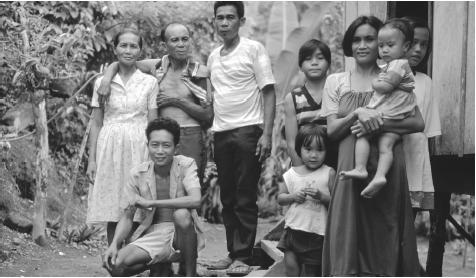
Urbanism, Architecture, and the Use of Space
The architecture of the islands shows Spanish influence. Spanish brick churches built during the colonial era dominate the towns. The churches are large and different from traditional construction. It is difficult to imagine how the indigenous population in the seventeenth century was able to build them.

Seaports and government centers had a larger proportion of Spanish buildings with wide verandas and tiled roofs. Towns destroyed during the liberation campaign in World War II, especially in central and northern Luzon, were rebuilt using wood. Areas of Manila destroyed during World War II have been restored to their historical Spanish appearance. Newer buildings in Manila range from standard multistory offices to Western-style gated housing areas for the affluent, to tenements and shacks.
Traditional houses in rural areas are nipa huts constructed of bamboo and roofed with leaves from palm trees or corrugated metal. Cinder blocks are the most commonly building material used. The blocks are plastered and painted on the inside and outside when funds permit. Plasterers add decorative touches to the exterior. Older houses have a "dirty" open-air kitchen for food preparation. Newer, larger houses designate a room as a dirty kitchen in contrast to the "clean" kitchen, which has an eating area where utensils are stored. Enclosed kitchens provide a roof over the cook and keep dogs and chickens from wandering into the cooking area. The roof is pitched so that rain will run off. Middle-class houses and commercial buildings have tiled roofs.
Contact
Philippine History and Rizal
The Manikens ResortKiAn Course
Veto Cruz Village
Philippines
+639 42 7778 ****
+639 07 3663 ****